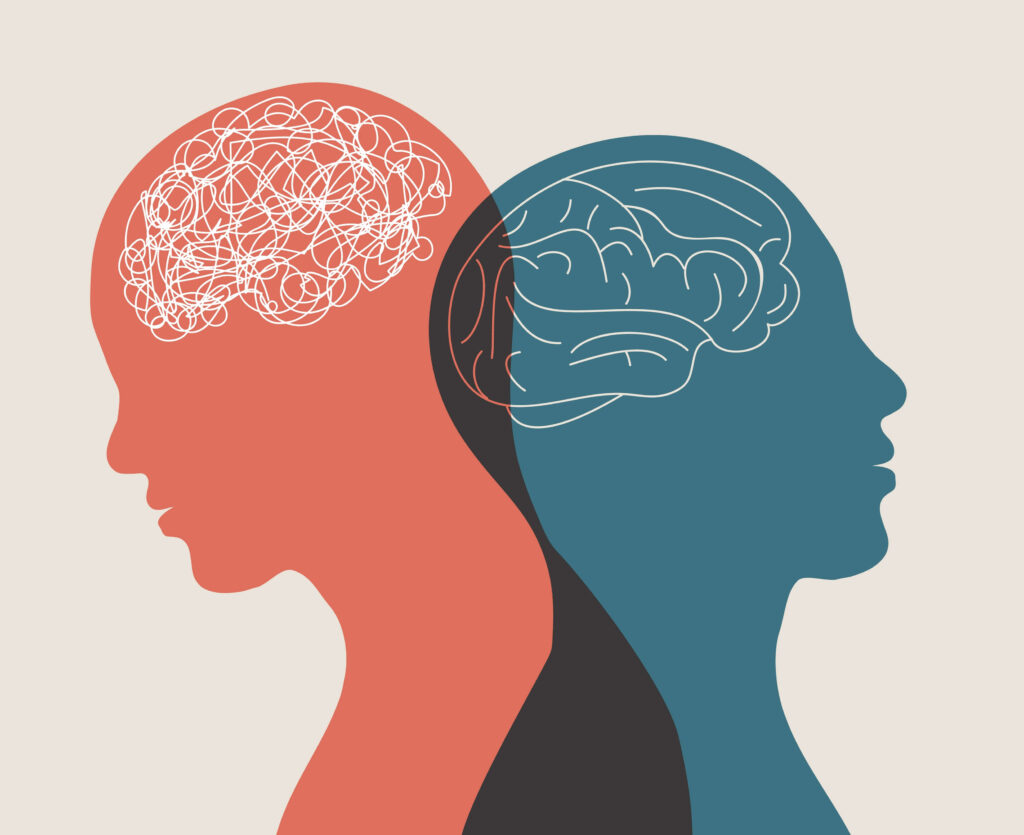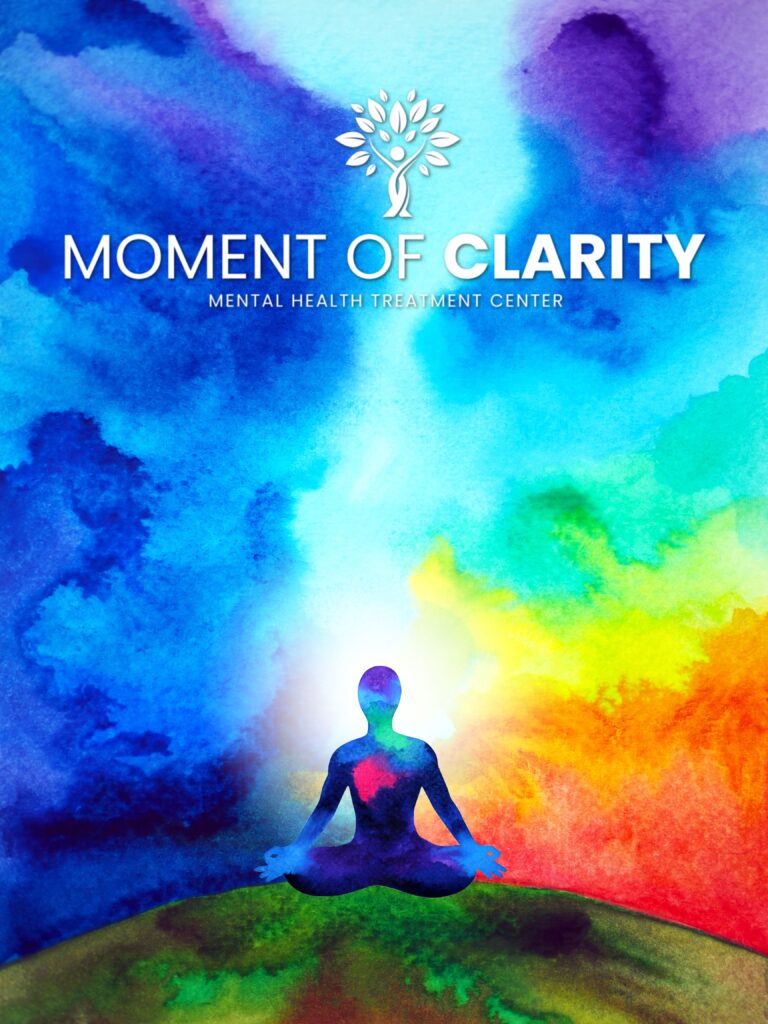At Moment of Clarity, we often see that most people have a generic understanding of depression and although we can help treat all types of depression, it is helpful to know that depression comes in many forms. These forms can vary from major depressive disorder (MDD), persistent depressive disorder (PDD), bipolar disorder with its associated depressive episodes, seasonal affective disorder (SAD), postpartum depression, situational depression, and atypical depression. Located in Santa Ana, California (Orange County), we offer outpatient mental health treatment programs for all forms of depression. Let’s identify the hallmarks of some of them and what is core to depression in its various forms.
Mental Health Treatment That Works
Understanding Depression
Depression is a prevalent mental disorder that affects how you physically and emotionally feel, what you think, and how you act. It can be described as a feeling of “living in a black hole,” but not always. Sometimes, especially in men, it can be a feeling of restlessness or anger. It can be a feeling of helplessness or hopelessness, and it can even be despair taking hold and not letting go. Often confused with anxiety, depression is not anxiety. Anxiety, however, can be a symptom of depression or a trigger for depression. There are many types of depression.
Some common symptoms of depression are:
- Anger. Your temper is short and anyone and everyone upsets you.
- Irritability. Restless and agitated, your tolerance for others is low.
- Changes in your sleep patterns. Either oversleeping or not sleeping, in the case of Insomnia.
- Recklessness. You engage in ill-advised behavior, such as gambling, substance abuse, reckless driving, or compulsive risk-taking.
- Lapses in Concentration. You can’t remember things, you have a hard time making even routine minor decisions, and you can’t focus.

Major Depressive Disorder (MDD)
Major depressive disorder (MDD) is a persistent and consistent sense of loss, disenchantment, and interest in daily activities which can have a significant impact on one’s life. One of the multiple types of Depression, some symptoms of major depressive disorder are:
- Social Isolation and excessive crying, irritability, and anger.
- Mood swings, sadness, loss of pleasure, and guilt.
- Psychomotor agitation and slowed speech.
- Repetitive thoughts of death or suicide.
Some causes and risk factors for major depressive disorder are:
- Genetics or brain chemistry. (specifically an imbalance in norepinephrine, serotonin, and dopamine).
- Stressful life events (such as a divorce, death in the family, or trauma).
- Childhood abuse.
Treatment options for major depressive disorder include:
- Although medications or psychotherapy (talk therapy) is the most often used method to treat or help alleviate some of the symptoms of major depressive disorder, the most effective means of alleviating its risk factors is a combination of both of these two methods.
- Antidepressants can also assist with alleviating brain chemistry, while electroconvulsive therapy (ECT) is most effective in cases of severe clinical depression where no other methods have worked.
Persistent Depressive Disorder (PDD)
When it comes to understanding the various types of depression, envisioning an escalation ladder is a good way of thinking about it. If major depressive disorder is characterized by a consistency or persistence in symptoms typically found in routine depression, then persistent depressive disorder is when the risk factors and symptoms are found in major depressive disorder or consistently found for more than a minimum of 2+ years.
Some common symptoms of persistent depressive disorder are:
- Excessive hunger or a loss of appetite.
- Indecisiveness.
- Low self-esteem.
- Feelings of worthlessness.
- Problems getting things done well and on time.
- Feeling down.
- Irregular sleep patterns.
Some causes and risk factors of persistent depressive disorder are:
- Negative affectivity in temperament.
- A family history of depressive disorder.
- Inherited traits in genes.
- Fluctuation in neurotransmitters in brain chemistry.
Treatment options for persistent depressive disorder include:
- Vigorous exercise and a healthy lifestyle/diet.
- Psychotherapy (talk therapy), especially when combined with medication.
Bipolar Disorder and Depressive Episodes
Amongst various types of depression, bipolar disorder is the one that has the most wide-spanning highs and lows. Unlike traditional depression which is categorized by lows and feelings of worthlessness/hopelessness, bipolar disorder also has episodes of manic highs (or hypomania) where a person has excessive moods of happiness, increased energy, and increased impulsivity. Unlike bipolar 1, bipolar 2 doesn’t have extended periods of episodes that span more than 2 weeks but both do have highs (manic episodes) and lows (depressive episodes).
Some common symptoms of manic episodes in bipolar disorder are:
- Making grand and unattainable plans.
- Rapid speech and racing thoughts.
- Sudden changes in mood like from joyful to being hostile and angry.
- Feeling you’re unusually talented or powerful.
Some common symptoms of depressive episodes in bipolar disorders are:
- Low energy, fatigue, and a lack of motivation.
- Difficulty concentrating or making decisions.
- Suicide ideation (thoughts of death or suicide).
- An increased need for sleep or Insomnia.
The key difference between bipolar disorder and major depressive disorder is that major depressive disorder is more than just feeling low (it is a deep sense of emptiness and sadness) that leads to changes in sleep patterns, appetite, and daily activity. Bipolar disorder, while it can have episodes of depressive lows, is categorized by the mood swings between depressive lows and manic highs.
Treatment options for bipolar disorder include:
- Habits of exercise, yoga, or meditation.
- Psychotherapy (talk therapy).
- Medications
- Electroconvulsive Therapy (ECT) in cases that are unresponsive to other options.
Seasonal Affective Disorder (SAD)
Seasonal affective disorder (SAD) is a type of depression that occurs during a specific time of the year, aligned with a season. When it comes to the types of depression, seasonal affective disorder is the most predictable because it starts and ends at the same time every year. Most people have their symptoms starting in the fall, carrying over into the winter months, and resolving during the summer time.
Some common symptoms of seasonal affective disorder (SAD) are:
- Having low energy.
- Feeling sluggish.
- Feeling hopeless or guilty.
- Low interest in activities you once enjoyed.
- Sleeping too much.
Common causes and risk factors of seasonal affective disorder (SAD) are:
- Your circadian rhythm (changes to your biological clock due to a decrease in sunlight in winter months).
- A drop in serotonin levels.
- A drop in melatonin levels.
Treatment options for seasonal affective disorder (SAD) are:
- Vitamin D and light therapy.
- Psychotherapy (talk therapy) and medications.
Postpartum Depression
Postpartum depression is a type of depression that is often characterized by the “baby blues” post-childbirth within a time frame of 2-3 weeks. Usually beginning post-childbirth, it is not unusual for it to onset during pregnancy and carry over into childbirth as well. Sometimes, it can even last for a longer period even after childbirth is resolved.
Common symptoms of postpartum depression are:
- Crying.
- Feelings that can be overwhelming.
- Sadness and anxiety.
- Loss of appetite.
- Difficulty concentrating.
- Severe anxiety and panic attacks.
Some causes and risk factors of postpartum depression are:
- Deregulation in the brain (alterations in the hormonal systems of the body as it relates to estrogen and progesterone).
- Familial genetics.
Common treatment options for postpartum depression are:
- Anti-anxiety medications.
- SSRIs, SNRIs, and other variations of antidepressants.
Situational Depression
Situational depression is a type of depression that often only lasts temporarily. Out of all the types of depression, situational depression is the one that lasts for the shortest amount of time. It is specifically caused by a traumatic or stressful event, and may even appear months after an event if you are still trying to process what has occurred.
Some common symptoms of situational depression are:
- Grief.
- A loss of interest in normal activities.
- Difficulty focusing and carrying out tasks.
- Anger.
- Changes in appetite.
Common causes and risk factors related to situational depression are:
- Relationship problems in a marriage (infighting or divorces).
- The passing of a loved one or family member.
- The loss of a job (unemployment) or financial issues (like debt).
- A life-or-death physical assault.
Some of the most common treatment options for situational depression are:
- Rest and relaxation.
- A healthy diet and regular exercise.
- In more extreme cases, SSRIs or dopamine reuptake blockers.
- A strong circle of friends and family.
Atypical Depression
Atypical depression is a type of depression where, in a lot of ways, it reflects the opposite of what situational depression showcases. Atypical depression is when you have a sudden and short-lived increase in energy or a temporary occurrence of what is known as “a manic episode.” This may be a reaction in your mood that is based on the occurrence of a positive life event.
Some common symptoms of atypical depression are:
- An increase in appetite leads to an increase in weight.
- Leaden Paralysis (known as a heavy feeling in one’s arms or legs).
- Hypersomnia (an excess of sleep).
- An increased sensitivity to criticism (actual, imagined, or anticipated).
Common risk factors and causes of atypical depression are:
- Chronic Stress.
- Trauma.
- Familial genetics are a chemical imbalance in the brain.
- Exponential grief following a significant loss ( a close friend or beloved family member).
Treatment options for atypical depression include:
- Psychotherapy (talk therapy).
- Medications such as SSRIs, SNRIs, TCAs, MAOIs, and NDRIs.
How Moment of Clarity Treats Different Types of Depression
Moment of Clarity specializes in personalized treatment for people diagnosed with any of the various types of Depression. From outpatient treatments to many different types of therapies, patients of Moment of Clarity will never feel they have the incorrect treatment as they’re trying to manage their symptoms. With comprehensive assessments and diagnosis techniques, Moment of Clarity ensures that the correct form of treatment is applied on a case-by-case, person-to-person basis. Call Moment of Clarity today at 949-625-0564 to enroll in mental health treatment.




